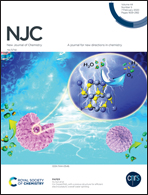Transformation of the active component during oxidative and reductive activation of the palladium hydrogenation catalyst
Abstract
Alumina-supported palladium catalysts with acetate and acetylacetonate as precursors were synthesized. The properties of palladium in these systems treated in oxidizing and reducing atmospheres in a wide temperature range of 300–700 °C were investigated. According to the results of UV-vis DRS and TPR, the Pd(Ac)2/(δ + ϰ)-Al2O3 systems, oxidized at 300–700 °C, are characterized by the presence of large particles of PdO and Pd2+ in the structure of the aluminate phases. The subsequent reduction at 500 °C of the preoxidized Pd(Ac)2/(δ + ϰ)-Al2O3 systems according to the TEM results is accompanied by the formation of well crystallized palladium particles with an average diameter of 1.2 nm, which are characterized by the presence of the hydride form of hydrogen. The oxidation of Pd(Acac)2/(δ + ϰ)-Al2O3 in the temperature range 300–700 °C leads to the formation of small clusters of PdO and palladium–aluminate phases. When reducing, only cluster forms of palladium with a diameter of 1.3 nm are formed from them. It should be noted that palladium particles of catalysts have a close charge state and properties of active centers according to XPS and IRS of adsorbed CO. Therefore, the higher activity of the Pd(Ac)2/(δ + ϰ)-Al2O3 system is due to the presence of the hydride form of hydrogen. This fact leads to a high conversion of methylacetylene and propadiene, but a low selectivity of their conversion to propylene. An increase in the temperature of treatments to 600 °C is accompanied by an increase in the particle size of palladium. According to the results of IR spectroscopy of adsorbed carbon monoxide for the systems Pd(Ac)2/(δ + ϰ)-Al2O3 and Pd(Acac)2/(δ + ϰ)-Al2O3, the number of Pdδ+ centers and groups consisting of three atoms Pd0 is noted. This probably leads to the formation of fewer unsaturated hydrocarbon molecules firmly bound to the surface of the palladium particles, and less screening of the active surface of the palladium particles, with the formation of large areas of active sites where chemisorption of methylacetylene and propadiene is sterically possible. This in turn leads to an increase in the conversion of acetylene and diene hydrocarbons.



 Please wait while we load your content...
Please wait while we load your content...